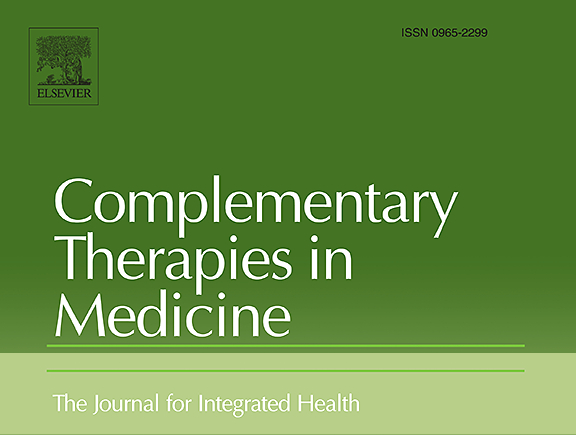by Guo-YanYanga AngeloSabaga Wen-LiHaoab Li-NingZhangc1 Ming-XianJiad1 NingDaie HanZhangf ZahraAyatiag Yan-JunChengh Chen-HaoZhangi Xiao-WenZhange Fan-LongBuj MinWenak XianZhoua Jian-PingLiue Peter M.Waynel CarolynEea DennisChanga HosenKiatmn JenniferHuntera AlanBensoussana
- a NICM Health Research Institute, Western Sydney University, Penrith, NSW 2751, Australia
b Public Health School, Inner Mongolia Medical University, Hohht, Inner Mongolia 010000, China
c Graduate Research School, Beijing University of Chinese Medicine, Beijing 100029, China
d China Resources Sanjiu Medical and Pharmaceutical Co. Ltd., Shenzhen, Guangdong 518110, China
e Centre for Evidence-based Chinese Medicine, Beijing University of Chinese Medicine, Beijing 100029, China
f School of Acupuncture and Massage, Beijing University of Chinese Medicine, Beijing 100029, China
g Department of Traditional Pharmacy, School of Pharmacy, Mashhad University of Medical Sciences, Mashhad, Iran
h Nanshan Maternal and Child Healthcare Hospital, Shenzhen, Guangdong 518000, China
i Faculty of Chinese Medicine, Macau University of Science and Technology, Macau 999078, China
j Beijing Children’s Hospital, Capital Medical University, Beijing 100045, China
k School of Ethnic Medicine, Yunnan Minzu University, Kunming, Yunnan 650504, China
l Osher Center for Integrative Medicine, Brigham and Women’s Hospital and Harvard Medical School, Boston, MA 02215, USA
m Cardiac Health Institute, Sydney, NSW 2122, Australia
n Faculty of Medicine, Human and Health Sciences, Macquarie University, NSW 2109, Australia
Abstract
The objective of this bibliometric review was to identify the volume, breadth, and characteristics of clinical studies evaluating Tai Chi published between January 2010 and January 2020. Five English and four Chinese language databases were searched. Following independent screening, 1018 eligible publications representing 987 studies were identified, which was a three-fold increase from the previous decade. Most common were randomized controlled trials (548/987, 55.5 %), followed by systematic reviews (157/987, 15.9 %), non-randomized controlled clinical studies (152/987, 15.4 %), case series (127/987, 12.9 %) and case reports (3/987, 0.3 %) that were conducted in China (730/987, 74.0 %), followed by the United States of America (123/987, 12.5 %) and South Korea (20/987, 2.0 %). Study participants were mostly in the adult (55.2 %) and/or older adult (72.0 %) age groups. The top ten diseases/conditions were hypertension, chronic obstructive pulmonary disease, diabetes, knee osteoarthritis, heart failure, depression, osteoporosis/osteopenia, breast cancer, coronary heart disease and insomnia. A quarter of the studies enrolled healthy participants to evaluate the effects of Tai Chi on health promotion/preservation, balance/falls, and physiological/biomechanical outcomes. Yang style Tai Chi was the most popular, followed by Chen and Sun style. Tai Chi was mostly commonly delivered face-to-face by a Tai Chi instructor in group settings for 60 min, three times a week, for 12 weeks. Most studies (93.8 %) reported at least one outcome in favor of Tai Chi. Adverse events were underreported (7.2 %). Over half fell short of expected intervention reporting standards, signalling the need for Tai Chi extensions to existing guidelines.


